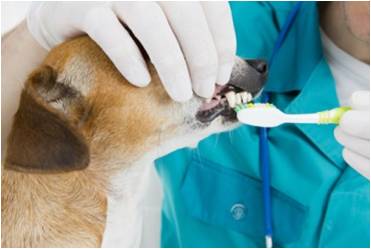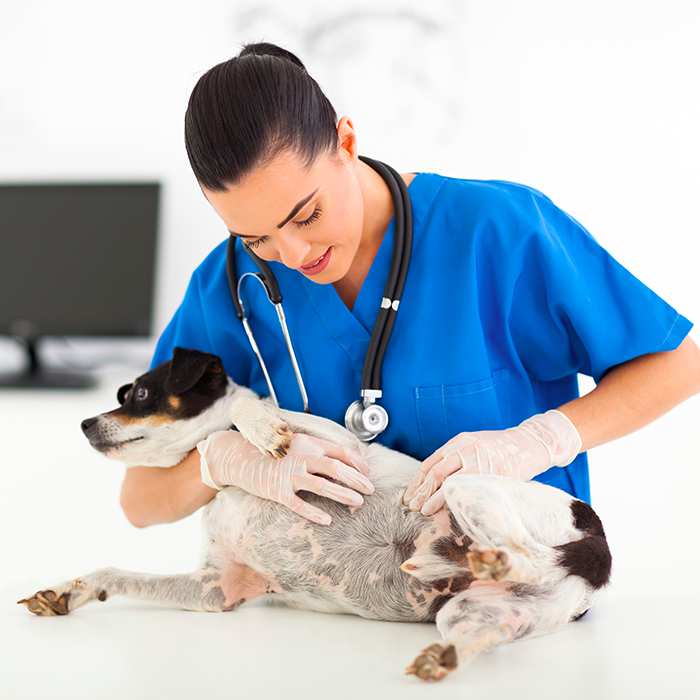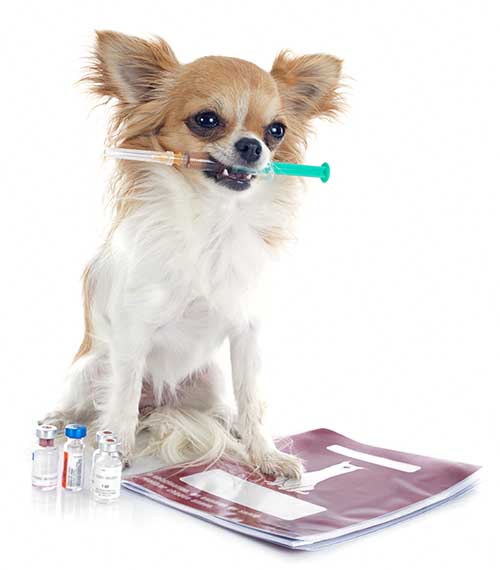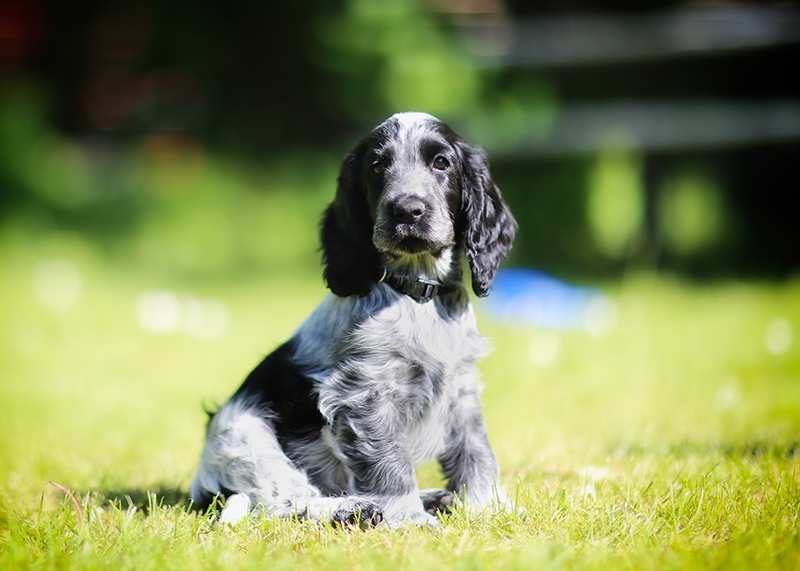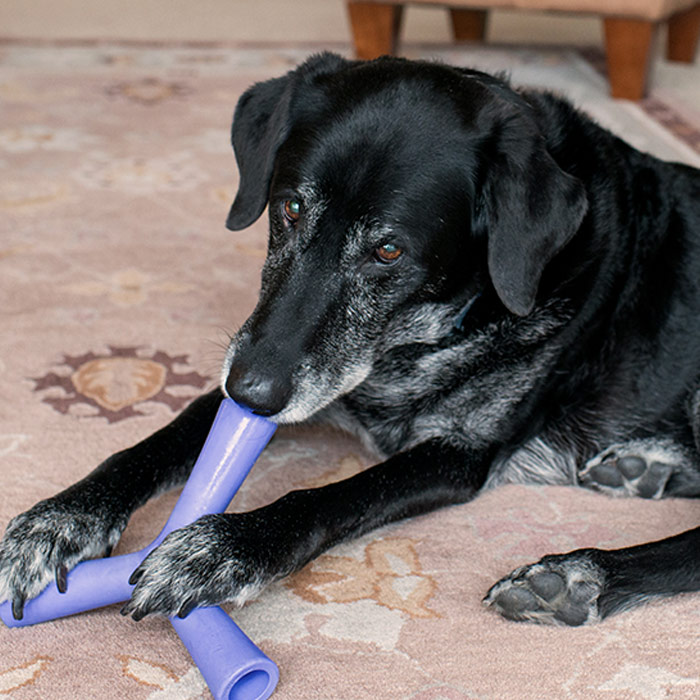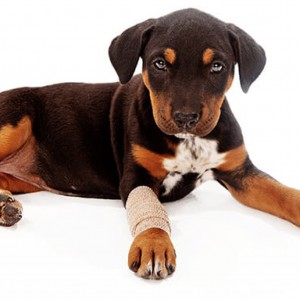Dog dental care – what you need to know
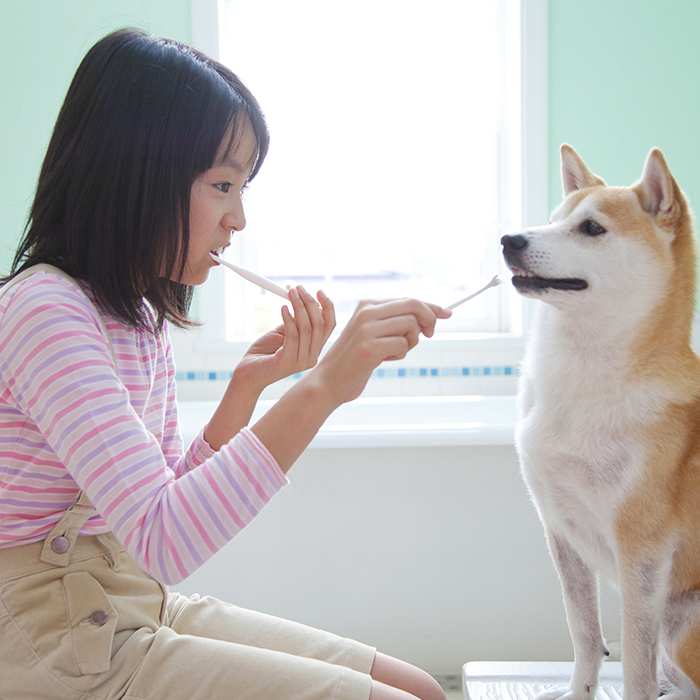
Something that is often overlooked by dog owners is their dog’s dental care. We take our dental health very seriously and, in turn, we should be doing the same for our pets. While it’s often assumed that it’s normal for dogs to have pretty bad breath, you might not realise that dogs can suffer from some very serious dental problems —it’s just that, more often than not, they won’t be showing you that they are in pain.
In actual fact, just over 85% of dogs over the age of 4 years develop some form of periodontal disease. The most common issues you may find with a dog’s mouth include things such as broken or cracked teeth, gum disease, tooth ache and loose teeth. These problems are often hard to detect in dogs, yet they can cause a great deal of pain and eventuate into serious illness. Yet, in many cases, such problems can be avoided with some basic, proactive doggie dental care — brushing teeth, providing suitable chew toys and taking your pup for regular check-ups and cleans can make a really big difference to its dental health.
How does periodontal disease occur?
Periodontal disease or gum disease develops when particles of food and bacteria build up along the gum line. This build up forms plaque, the very same stuff that can gum disease in humans if we don’t take care of our teeth. When the saliva mixes with the plaque, it causes tartar—it’s the tartar that causes the real problems here, including bad breath and inflammation or infection.
This condition is called gingivitis.

If the inflammation spreads beneath the gum, serious infection can occur, resulting in a great deal of pain and the possible loss of teeth.
The chance of developing periodontal disease is far higher for older dogs or dogs that have a history of being sick. Small dogs that tend to have their teeth positioned in closer proximity are also more likely to develop the disease, while a weakened immune system can also play a role.
For more info on dental disease and maintaining pet dental hygiene, see here.
Cost of dental disease treatment for dogs
Dental disease was one of the most common health issues experienced by dogs in 2022, according to PetSure claims data.
Claims data for dental disease |
Average cost of treatment |
Highest cost of treatment |
| Dogs | $706 | $11,923 |
Because it is difficult to predict the costs of veterinary care, it can help to have measures in place to help prepare for the unexpected. Pet insurance can help by covering a portion of the eligible vet bill if the unexpected does happen.
Get a quote for 2 months free pet insurance for your puppy in their first year.
How to prevent periodontal disease in your dog
Unfortunately, dogs can’t take care of their own dental hygiene so it’s important to do our best to reduce the chances of serious infection. There are a number of steps you can take avoid the onset of gum disease – brushing your dog’s teeth and taking them to the vet are two of the most important things you can do, while providing suitable dental chews and a dental friendly diet may also help.
Dental check ups and professional teeth cleaning
Probably the best way to support your pet’s dental health is by seeing your vet for regular dental check-ups and teeth cleaning. The same way as you get your teeth checked and professionally cleaned on a regular basis, this is also highly recommended for your dog, and even more so for breeds with predispositions for dental disease, including many of the small breeds and dogs that are fed wet food.
Although an expensive exercise, professional dental care is important because your vet will be able to identify any development of dental disease early on, and be able to address any issues he or she finds. Additionally, your dog’s teeth will be professionally and properly cleaned, which will help to prevent future dental disease from developing. Teeth-cleaning is an in-depth procedure that usually takes place under anaesthetic so as to remove any plaque below the gum line, where periodontal disease sets in. X-rays of the teeth are taken, and if your dog has any accumulated tartar it will be removed. This process, called prophylaxis (or scale and polish), will allow you to implement your home dental care on teeth that are free from plaque and tartar, which will make your efforts easier and more effective.
So, if there is just one thing you choose to ensure your dog’s dental health, we recommend an annual dental examination and teeth cleaning from around age 6 months. We suggest that you to do this every 12-18 months thereafter, but please discuss with your vet how often is right for your dog – some will require more frequent care, depending on factors such as age, breed and the ongoing home dental care provided.
Brushing your dog’s teeth
This is the number one thing you can do to prevent dental disease in your dog, and it isn’t nearly as daunting a task as many people seem to think. If you want to take your dog’s dental health seriously, then brushing your dog’s teeth is a routine you need to establish sooner rather than later. Here are the things you’ll need before you get started:
- A toothbrush. While you’ll find that there are dog toothbrushes on the market, a soft-bristled toddlers’ toothbrush will do fine. You can also use a finger brush.
Note: While electric toothbrushes can do the job, we don’t recommend them for dogs. They may get spooked by the sound or move and injure themselves.
- Special dog toothpaste. Unfortunately it’s not advised that you use your family’s toothpaste for brushing your dog’s teeth. Your dog does not know how to rinse and spit, and if human toothpaste is swallowed, it could cause your dog to get sick.
Fun fact: If you’re having trouble getting your dog to cooperate in getting its teeth cleaned, ask your vet or pet store about flavoured toothpaste. Many now come in chicken or beef flavour and will excite the senses of any pooch.
- A handful of doggy treats. If you’re having trouble getting your pup to take to getting their teeth brushed, a treat every once in a while during or after the process as a reward may help you.
A quick guide to brushing your dog’s teeth
- Put a small amount of toothpaste on the toothbrush.
- Once you’re ready, gently pull the gums upwards and away to reveal the teeth.
- Brush the entire gum surface in a circular motion, gently covering all areas and particularly at the base of the teeth line.
- Gently brush the teeth themselves, particularly the base of each tooth, in between each tooth and the hard-to-reach teeth in the back of the mouth.
- Give extra focus to the canine teeth—you’ll most likely notice that they’re visibly grubbier than the rest anyway.
- Once done, give your well-behaved pup a big pat and offer them a doggy treat or toy to play with.
- Have their water bowl full and nearby. Often they’ll be thirty after a good brushing session.
For more detailed info on brushing your dog’s teeth, see our article here.
Long -lasting chews

As well as brushing your dog’s teeth, we recommend providing appropriate items to chew on. Most dogs love to chew on things, especially when they’re feeling bored or alone. One of the most proactive ways they can spend that alone time is chewing on a long-lasting, dental-friendly chew or toy, which, along with keeping them occupied and entertained, can help in maintaining their dental health.
 While not a substitute for brushing and cleanings, ongoing chewing may be helpful in removing some of the plaque that has already formed in your dog’s mouth, thereby reducing the chance of developing gum disease. Chewing is the only way dogs can naturally keep their teeth clean as the constant gnawing scrapes plaque off the teeth. Puppies in particular love to chew, and providing them with chew toys can help relieve teething pain and satisfy their natural instincts to chew. It also hopefully keeps them away from other potential chewing targets – like your shoes or furniture!
While not a substitute for brushing and cleanings, ongoing chewing may be helpful in removing some of the plaque that has already formed in your dog’s mouth, thereby reducing the chance of developing gum disease. Chewing is the only way dogs can naturally keep their teeth clean as the constant gnawing scrapes plaque off the teeth. Puppies in particular love to chew, and providing them with chew toys can help relieve teething pain and satisfy their natural instincts to chew. It also hopefully keeps them away from other potential chewing targets – like your shoes or furniture!
There are many types of chews available, some of which are controversial – both in terms of their efficacy and their safely – so it can be difficult to know which to choose. Again, talk to your vet about which products are best for your particular dog’s teeth; some are exceptionally hard on the teeth and can even lead to tooth fractures. Make sure that any toys you purchase are designed to be chewed on and are safe for consumption, as your dog’s teeth can break through most substances and bits of the item could land up being swallowed. This could cause internal injury to your dog, as well as pose a risk of causing an life-threatening obstruction. If there is any risk associated with the item, make sure to only give it to your dog to chew on when you are around to supervise.
Some long-lasting chew options are:
- Plastic, rubber or nylon toys e.g. Kongs, Nylabones
- Raw bones
- Antlers
- Rawhide
- Cows’ ears
- Bully sticks
- Jerky
Dental friendly diet
Some foods are thought to be better than others for maintaining good dental health. It’s been a long-standing belief that dry food does a better job at keeping plaque away from teeth, while many wet or tinned foods will increase the risk. Another belief of growing popularity is that a raw food diet is best for oral health. There are also vet-prescribed diets (examples include Hills T/D, Eukanuba Dental Defence and Royal Canin Dental) that have been developed specifically for dental health, as well as a myriad of other ‘dental diet’ foods and treats that claim to scrub the teeth as they chew or to include additives that help soften plaque and/or tartar.
With so many options available, the most sensible advice when it comes to diet and dental health is to consult your vet about what diet is best for your dog’s dental health, and follow the advice provided. Feeding your dog a high-quality food, avoiding table scraps and using certain chews that are specially formulated to keep teeth healthy are basic steps you can take to support your dog’s dental health. However, the most important thing is not to rely on foods and chews alone to prevent dental issues from arising.
Other doggie dental products
There are a number of products available that claim to assist in reducing or slowing the build-up of plaque on the teeth. However, they generally won’t prevent it from occurring in the first place and should be used in addition to, rather than instead of, regular brushing. Note that these products may contain chemicals that may not be suitable for your dog, especially if it has any health conditions, so it’s always best to consult with your vet before using any of these products.
- Oral rinses and sprays – may help to reduce the growth of bacteria in the mouth, which can help in preventing dental disease.
- Dental wipes – may be recommended where tooth brushing isn’t feasible.
- Water additives – can help reduce the accumulation of plaque, tartar or both.
- Dental chew treats – may contain ingredients that freshen doggie breath and help clean plaque from the teeth as they are chewed, e.g. Greenies and Whimzees.
- Breath fresheners – may contain ingredients like peppermint to help the breath smell better.
A pet insurance policy with Bow Wow Meow will help ensure you can always afford to give your pet the best treatment, whatever your budget.
-
Find out more about our pet insurance options for dogs
-
Get an instant online pet insurance quote



